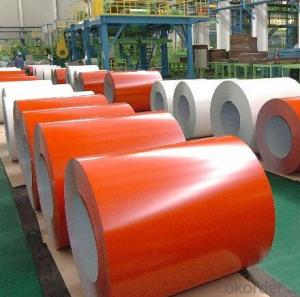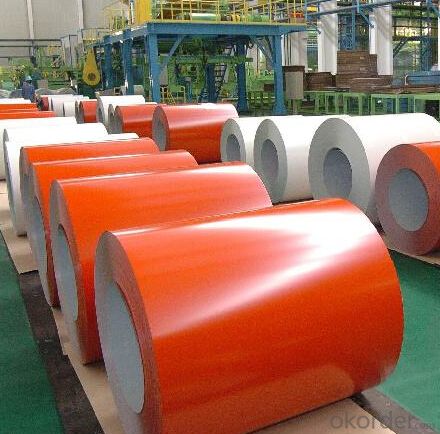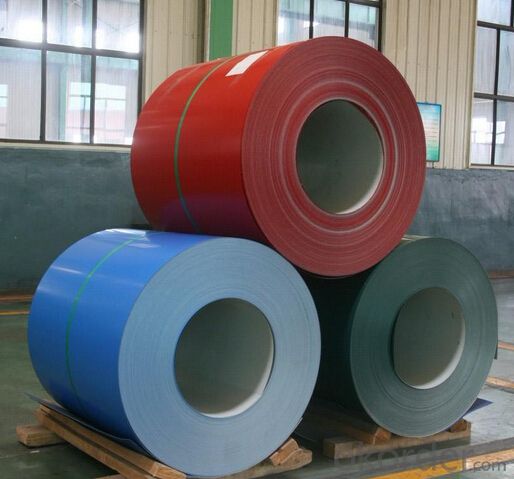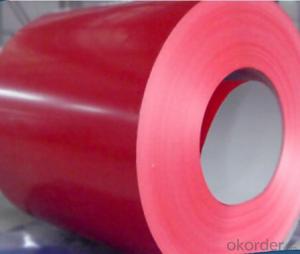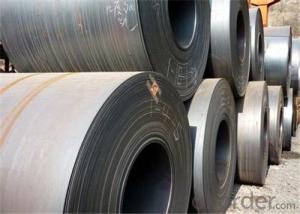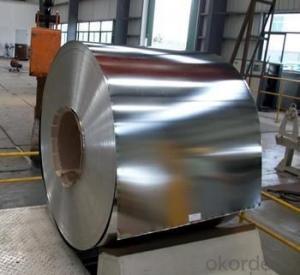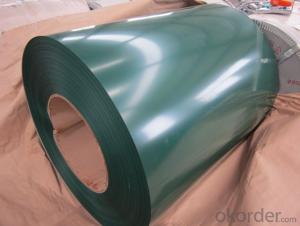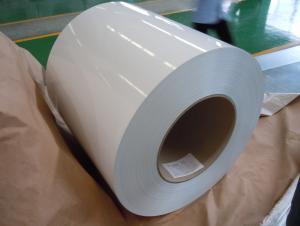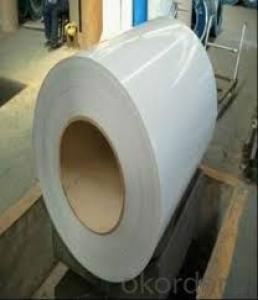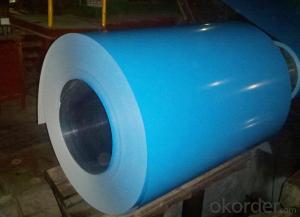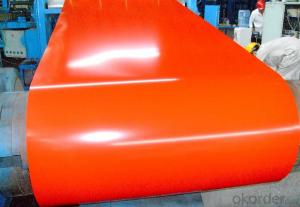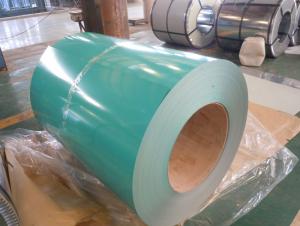Pre-painted Galvanized Steel Coil Color Coated
- Loading Port:
- Tianjin
- Payment Terms:
- TT OR LC
- Min Order Qty:
- 10 m.t.
- Supply Capability:
- 1000 m.t./month
OKorder Service Pledge
OKorder Financial Service
You Might Also Like
Specification
1.Introduction of Prepainted Galvanized Steel Coil:
Galvanized steel coil is a special type of steel coil used in a number of different applications within fabrication and manufacturing environments. Steel coil of any kind is flat stock that is thin enough to be rolled into a coil or wound into a continuous roll.
2.Usages of Prepainted Galvanized Steel Coil:
With excellent cold bending molded manufacturability, good decoration effect, strong anti-corrosion ability, galvanized steel coils and sheets are also pollution-free and easily recycled. Accordingly, they can be used as final products and basic plates of color coated steel coils and widely applied in construction, home appliances, decoration, ect.
3.Prepainted Galvanized Steel Images:

4.Galvanized Steel Specification:
Galvanized steel coils | ||
Brand Name: | GANGZHENG Steel | |
Standard: | ASTM;EN;GB;JIS;A755M | |
Grade: | CGLCC /CGCC | |
Size: | Thickness: | 0.14-0.8mm |
Width: | 600mm-1250mm | |
Length: | Coil or Customer's requirement | |
Base plate: | galvanized steel coils | |
Color: | RAL color or according to the sample | |
Coil ID: | 508mm / 610mm | |
Coil Weight: | any tons or client’s requirements | |
Type : | coil or sheets | |
5.Our Factory:

6.FAQ
We have organized several common questions for our clients,may help you sincerely:
①How about your Warranty?
Warranty: 1-Year for the whole light. Warranty is based on correct storage, installation, using and maintenanc
②How to guarantee the quality of the products?
We have established the international advanced quality management system,every link from raw material to final product we have strict quality test;We resolutely put an end to unqualified products flowing into the market. At the same time, we will provide necessary follow-up service assurance.
③How long can we receive the product after purchase?
In the purchase of product within three working days, We will arrange the factory delivery as soon as possible. The pecific time of receiving is related to the state and position of customers.Commonly 7 to 10 working days can be served.
- Q: How are steel coils used in the manufacturing of telecommunications equipment?
- Steel coils are used in the manufacturing of telecommunications equipment as they serve as a crucial component for the fabrication of various parts and structures. These coils are commonly used to create cabinets, enclosures, and racks that house and protect telecommunications devices such as servers, switches, and routers. Additionally, steel coils are utilized in the construction of antenna towers and other supporting structures, providing the necessary strength and stability for the equipment.
- Q: How are steel coils coated for added protection?
- Steel coils are coated for added protection using a process called coil coating. This process involves the application of a protective layer onto the surface of the steel coil to enhance its durability and resistance to corrosion. There are various methods used to coat steel coils, but the most common one is the continuous coil coating process. In this process, the steel coil is unwound and cleaned thoroughly to remove any contaminants or impurities from the surface. This ensures proper adhesion of the coating material. Once the steel coil is cleaned, it is then pre-treated to enhance its surface properties. This pre-treatment typically involves applying a chemical solution or a conversion coating to the surface of the coil. The purpose of this step is to create a receptive surface for the coating material and enhance its adhesion. After the pre-treatment, the steel coil is coated with a protective layer. This coating material can be a liquid paint, a powder coating, or sometimes a combination of both. The coating is applied uniformly onto the surface of the coil using various techniques, such as roll coating, spray coating, or electrostatic coating. Once the coating is applied, the steel coil is cured or dried using heat or sometimes ultraviolet light. This curing process ensures that the coating material forms a strong bond with the steel surface and achieves the desired protective properties. The coated steel coil is then inspected for quality control measures, such as thickness, adhesion, and appearance. If it meets the required specifications, it is further processed, which may involve cutting, slitting, or forming into the desired shape or size. Overall, the process of coating steel coils for added protection involves thorough cleaning, pre-treatment, application of a protective coating, curing, and quality control. This ensures that the steel coils possess excellent resistance to corrosion, abrasion, and other environmental factors, making them suitable for a wide range of applications in various industries.
- Q: My boyfriend is a loyal follower of this guy called Dr. Steel.
- Dr. Steel is an extremely complex phenomenon, a bit of a metaphorical nesting doll. On the surface, Dr. Steel can appear to some as simply a method actor musician with an over-the-top gimmick. Just underneath that facade lies an enigma; he makes some people wonder if he's really serious, just trying to entertain, or completely barking mad. But underneath the second facade, Dr. Steel is really acclaimed comic-book writer and chaos magickian, Grant Morrison. Make no mistake, he really thinks he is Dr. Steel. He has taken method acting and ceremonial magick to the highest levels, and fully intends to take over (or make over) the world. What's more, in the three short years since handing over his comic-book authorship to a ghost writer, he has amassed tens of thousands of followers worldwide. I've done several polls among Dr. Steel fans, and the results show that for every one person who has officially signed up, there are ten more loyal followers who have not.
- Q: Are steel coils used in the aerospace industry?
- Yes, steel coils are used in the aerospace industry.
- Q: Does anyone know how to make a steel helmet, or does anyone know where to direct me websites-wise? i've just started looking on the web for info, so when i get back here i might've already found some info, but more wouldn't hurt, especially if from people who are interested on the subject. i know nothing about metallurgy, nothing on the art of metal working etc... please help.
- The okorder (Artist Blacksmiths) or on the sites of the two organizations that reproduce old costumes and tools - one is called The Society for Creative Anachronism, not sure of the other. Search terms to use might be hammering a helmet and forging medieval armor
- Q: How are steel coils labeled and identified?
- To ensure accurate tracking and handling of steel coils throughout their journey, various methods are employed to label and identify them. The labeling and identification process typically consists of the following steps: 1. Initial Marking: At the outset, the manufacturer's name or logo is affixed to the steel coil, enabling easy identification of the producing company. 2. Unique Identification Number: A distinct identification number, commonly known as a coil number, is assigned to each steel coil. This number is often engraved or imprinted on the surface of the coil and serves the purpose of tracking and managing inventory. 3. Specifications of Size and Weight: Labels indicating the size and weight specifications of the steel coils are attached. This information aids in determining the coil's dimensions and weight capacity, ensuring appropriate handling and transportation arrangements. 4. Indication of Grade and Material: The labeling typically includes information about the grade and material composition of the steel coil. This essential data offers insights into the properties and quality of the steel, guaranteeing its correct utilization in manufacturing processes. 5. Heat or Lot Number: Steel coils may also bear a heat or lot number, which denotes the production batch from which the coil originated. This information contributes to traceability and quality control, simplifying identification in the event of any issues or defects. 6. Barcodes or QR Codes: Many steel coils now feature barcodes or QR codes that can be scanned using automated systems. These codes contain all pertinent information about the coil, streamlining data capture and management throughout the supply chain. Proper labeling and identification of steel coils are of utmost importance for efficient logistics management, inventory control, and quality assurance. By implementing these identification methods, manufacturers, distributors, and end-users can effortlessly track, handle, and utilize steel coils in a secure and productive manner.
- Q: How are steel coils used in the production of agricultural machinery parts?
- Steel coils are used in the production of agricultural machinery parts as they provide a durable and strong material for manufacturing components such as plow blades, tiller tines, and harvesting machine components. The steel coils are typically cut, shaped, and welded to create the necessary parts that can withstand the harsh conditions and heavy-duty operations involved in agricultural activities.
- Q: I have a Charles Daly shotgun and I'm trying to find out if it is ok to shoot steel out of. The side engravings say: Charles Daly 20 GA 3 and the other side says : KBI-HBG, PA made in TurkeyOn their website it says that the barrel on the Charles Daly 300 Field is able to shoot steel but I don't see anywhere that this is a 300 model.Im also not sure if the choke is able to shoot steel. It has no engravings on it. How can I tell if this choke will work? It is the original choke that came with the gun?
- I do not know that gun. I have the over/unders. A little checking. Now checking the specs it does describe the barrel steel, and that it is threaded to standard Rem Choke size threads. So before you shoot steel if you do not know what choke you have go to any gunshop and ask them to just stick their choke gauge in the choke. On the choke itself it should say what choke it is. For steel shot you should use one choke size LARGER then the way you want the gun to pattern. ie. A modified choke will shoot a full choke pattern. An Improved cylinder choke a modified pattern and so on. DO NOT use a full choke. the full choke is too tight, and steel shot does NOT deform like lead does. The first indication of a problem would be a bulge in the barrel out near the muzzle end. Run your hand down and feel it. The barrel steel is fine though just use or get the correct choke tube, AND what I said is if you so not have anything BUT a full choke buy a Rem Choke the size you want. Even Walldog sells Rem Chokes.
- Q: Can steel coils be used in the automotive industry?
- Yes, steel coils can be used in the automotive industry. Steel coils are commonly used in the manufacturing of various automotive parts and components, including body panels, chassis, frames, and suspension systems. The high strength and durability of steel make it an ideal material for ensuring the safety and structural integrity of vehicles. Additionally, steel coils can be easily shaped and formed to meet the specific design requirements of different automobile models, making them a versatile choice for the automotive industry.
- Q: How are steel coils used in the production of industrial tanks?
- Steel coils are used in the production of industrial tanks as they are rolled and shaped into the desired form, providing the necessary strength and durability for the tank structure.
Send your message to us
Pre-painted Galvanized Steel Coil Color Coated
- Loading Port:
- Tianjin
- Payment Terms:
- TT OR LC
- Min Order Qty:
- 10 m.t.
- Supply Capability:
- 1000 m.t./month
OKorder Service Pledge
OKorder Financial Service
Similar products
Hot products
Hot Searches
Related keywords
